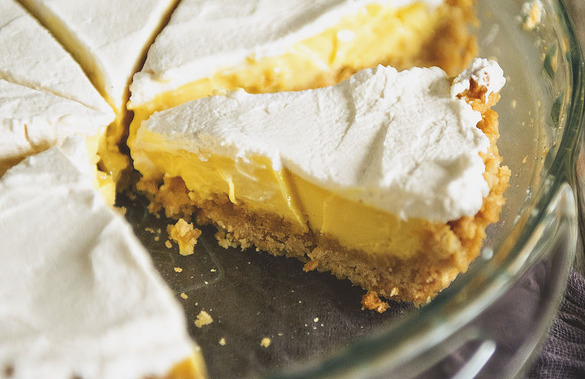Cooking for Groups
Cooking For Groups | En Español | En Español PDF
This information will help volunteers prepare and serve food safely for large groups such as family reunions, church dinners, and community gatherings. Get the booklet, artwork, and more.
For General Audiences
Basics for Handling Food Safely | PDF | En Español | En Español PDF
Lists safe steps in food handling, cooking, and storage; includes a cold storage chart.
Be Smart. Keep Foods Apart. Don’t Cross-Contaminate
By following these simple steps, you can prevent cross-contamination and reduce the risk of foodborne illness.
The Big Thaw — Safe Defrosting Methods — for Consumers | PDF | En Español | En Español PDF
Learn about the three safe ways to defrost food: in the refrigerator, in cold water, and in the microwave.
“Check Your Steps” Children’s Color Quiz (PDF Only)
Fill-in-the-blank and matching activity for kids.
Cleanliness Helps Prevent Foodborne Illness | PDF
By keeping everything clean that comes in contact with food, consumers can be assured they are helping to do their part to Fight BAC!®
Color of Meat and Poultry | PDF | En Español | En Español PDF
What factors affect the color of meat and poultry? What do color changes mean in terms of food safety?
Cooking Safely in the Microwave Oven | PDF | En Español | En Español PDF
This fact sheet lists the basics for safe microwave cooking or reheating.
Cutting Boards and Food Safety | PDF
To avoid cross-contamination, choose and maintain your cutting boards with food safety in mind.
“Danger Zone” (40 °F – 140 °F) | PDF | En Español | En Español PDF
Leaving food too long in the temperature “danger zone” causes foodborne bacteria to grow to levels that can cause illness.
Deep Fat Frying and Food Safety | PDF
Important guidelines to prevent deep fat frying injuries at home, and to ensure that food is cooked to a safe temperature.
Doneness Versus Safety | PDF | En Español | En Español PDF
Is “done” the same thing as “safe”? What does it mean to cook to proper temperature?
Door-to-Door Meat Sales | PDF | En Español | En Español PDF
Consumers must know important information about the dealer and the company before making a decision they might later regret.
Fighting BAC!® by Chilling Out
Cold temperatures keep harmful bacteria from growing.
Food Product Dating | PDF | En Español | En Español PDF
Background information on what dates do and don’t tell you about the safety of your food.
Food Safety After School | PDF | En Español PDF
Learn why children are at risk for foodborne illness and know the kitchen practices that help keep them from becoming ill.
Food Safety Counts! (PDF) | Alternate Text
Always “Check Your Steps” to protect your family from food poisoning.
Food Safety Tips for College Students | PDF
The USDA Meat and Poultry Hotline answers questions from parents or students about the handling and storage of food for college kids.
Food Safety Tips for Home Delivered Meal Program Participants
Available from the National Resource Center on Nutrition and Aging.
Food Safety While Hiking, Camping & Boating | PDF | En Español | En Español PDF
Whether you are in your kitchen or enjoying the great outdoors, there are some food safety principles that remain constant.
Food Safety Quiz | En Español | En Español PDF
Four questions to check basic knowledge of the Be Food Safe principles.
Freezing and Food Safety | PDF | En Español | En Español PDF
How to freeze food safely and how long to keep it.
Grilling and Food Safety | PDF | En Español | En Español PDF
Use these simple guidelines for grilling food safely.
Handling Food Safely on the Road | PDF | En Español | En Español PDF
Plan ahead and pack safely for the camping trip, boat ride, day at the beach or trip in the RV.
High Altitude Cooking | PDF | En Español | En Español PDF
Food safety considerations for cooking meat, poultry, and egg products at altitudes above 3,000 feet.
Hotline Answers “Panic Button” Food Safety Questions | PDF | En Español | En Español PDF
During the holidays, people are busy and can sometimes forget that unsafe handling and cooking can lead to foodborne illness. Here are some questions callers have asked regarding the safety of their holiday foods.
How Temperatures Affect Food | PDF
Keep food out of the Danger Zone between 40° and 140 °F.
Keep Food Safe! Food Safety Basics | PDF
Safe steps in food handling, cooking, and storage are essential in preventing foodborne illness.
Keep Hands Clean! with Good Hygiene (PDF Only)
Colorful 8½ by 5½ card conveys the theme for National Food Safety Education Month 2005.
Keeping “Bag” Lunches Safe | PDF | En Español | En Español PDF
Food brought from home can be kept safe if it is first handled and cooked safely.
Kitchen Companion: Your Safe Food Handbook (PDF Only)
This food safety handbook contains all the basic information you need to know about food safety…some old, some new… and all in one place.
Leftovers and Food Safety | PDF
USDA recommendations for handling leftovers safely to prevent foodborne illness.
Let Me Tell You How Dad Got Sick! | PDF | En Español | En Español PDF
This story of a case of foodborne illness is told in comic book format.
Mail Order Food Safety | PDF | En Español | En Español PDF
These tips will help the purchaser and recipient determine if their perishable foods have been handled properly.
Meat and Poultry Packaging Materials | PDF
Explains various types and uses of packaging materials and how their safety is regulated by government agencies; includes a glossary of packaging terms.
Mechanically Tenderized Beef | PDF
USDA now requires meat processors to disclose mechanical tenderization and give safe cooking instructions to consumers.
Microwave Ovens and Food Safety | PDF
This comprehensive fact sheet answers all your microwave questions.
Molds On Food: Are They Dangerous? | PDF | En Español | En Español PDF
Includes a chart, Moldy Food: When to Use, When to Discard. This information is helpful after an extended power outage or a flood.
No-Show Guests Jeopardize Food Safety | PDF
When guests encounter emergencies and the meal must be delayed or cancelled, food must be handled “just right” to remain safe.
Refrigeration & Food Safety | PDF
Covers the importance of refrigeration, placement of foods, proper storage temperatures and times.
Safe Handling of Take-Out Foods | PDF | En Español
Keep take-out and delivered foods safe and store leftovers properly.
Safe Minimum Internal Temperature Chart | PDF
One-page fact sheet that lists USDA’s recommendations.
Shelf Stable Food Safety | PDF
Answer your questions about the safety and proper storage of shelf stable foods — those that do not require refrigeration, like (most) canned goods; learn about the science behind modern food packaging methods.
Slow Cookers and Food Safety | PDF | En Español | En Español PDF
Used correctly, this countertop appliance is safe and convenient.
Smoking Meat & Poultry | PDF | En Español | En Español PDF
Where there’s smoke, there’s well flavored meat and poultry. Using a smoker is one method of imparting natural smoke flavor to large cuts of meat, whole poultry, and turkey breasts.
Specialty Devices and Food Safety | PDF | En Español | En Español PDF
Facts about thawing trays, solar box cooking, disposable temperature indicators, thermoelectric cooler/warmers.
Tailgating Food Safety Q & A | PDF
A tailgate gathering requires the same safe food handling practices as picnicking outdoors because a refrigerator and running water are probably not available.
Top Ten Reasons to Handle Your Food Safely | PDF | En Español | En Español PDF
Published in honor of the Meat and Poultry Hotline’s 10th year; updated in honor of its 25th year of operation.
Washing Food: Does It Promote Food Safety? | PDF
How to prevent cross-contamination; safe cleaning methods.
Your Family is First, Keep them Safe (PDF Only)
English translation of Su Familia es Primero – Manténgala Sana y Protéjala de Intoxicaciones Alimentarias (PDF). See our En Español pages for more Todo Cuenta materials.


